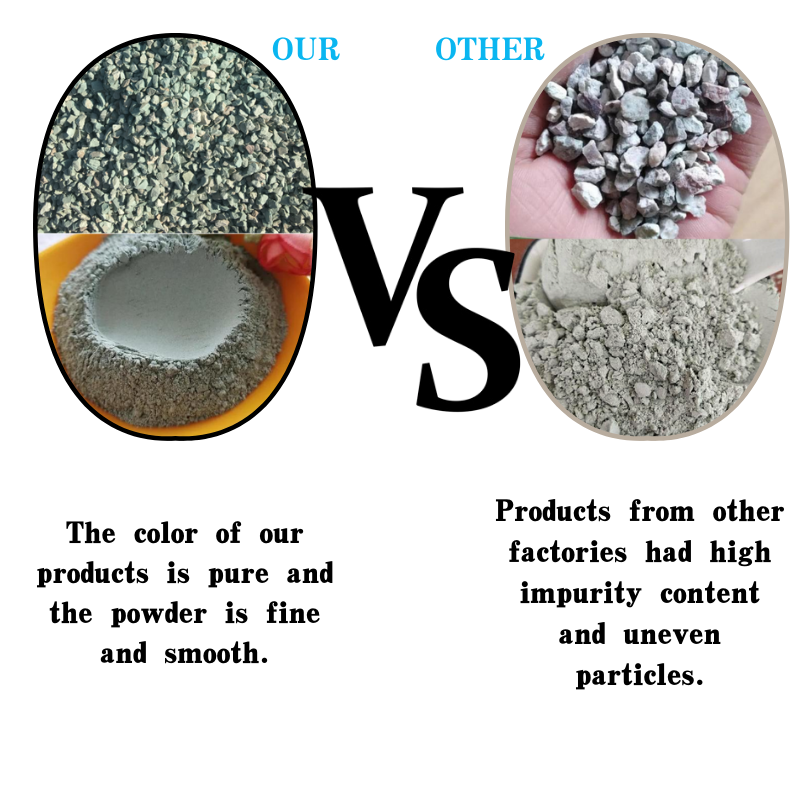
Understanding the Benefits and Applications of Resin Coated Sand in Modern Industry
What is Resin Coated Sand?
Resin coated sand is a specialized material widely used in the foundry industry for the production of metal castings. It is created by coating sand grains with a thermosetting resin, which enhances the sand's properties and provides several advantages over traditional molding sands. This innovative material has transformed the way castings are produced, contributing to improved quality, reduced waste, and greater efficiency in manufacturing processes.
Composition and Production
The primary component of resin coated sand is silica sand, known for its excellent thermal properties and resistance to erosion. To produce resin coated sand, the silica sand is first cleaned and dried to ensure that it is free from contaminants. Then, a binder—typically a phenolic or urethane resin—is mixed with the sand along with a catalyst or hardener. The resin bonds to the surface of the sand grains, creating a strong and durable coating. Depending on the desired properties, additives such as color pigments and other chemicals may also be included in the formulation.
The mixture is then baked in an oven, where the heat initiates the curing process, causing the resin to harden. This results in a robust and stable sand that can withstand high temperatures and pressures, making it ideal for molding applications.
Advantages of Resin Coated Sand
1. Improved Surface Finish One of the most significant benefits of using resin coated sand is the superior surface finish it provides for castings. The smooth and consistent texture of the resin-coated sand minimizes defects and improves the overall aesthetic quality of the finished product. This attribute is especially important in industries where appearance is critical, such as automotive and consumer goods.
2. Higher Strength The resin coating significantly enhances the strength of the sand, allowing for the production of thin-walled castings and complex shapes that would be challenging to achieve with traditional sands. This strength also reduces the likelihood of sand mold collapse during the casting process, ensuring better mold integrity.
what is resin coated sand

3. Reduced Gas Generation Traditional molding sands can produce gases during the casting process, which may lead to defects like pinholes in the casting. Resin coated sand has a lower propensity to generate gases due to its chemical stability, resulting in cleaner castings with fewer imperfections.
4. Versatility Resin coated sand is compatible with various metal alloys and can be used in a range of casting processes, including shell molding and cold box processes. This versatility makes it a favored choice for foundries looking to optimize their casting operations.
5. Reduced Waste The durability of resin coated sand means that it can be reused multiple times without significant degradation of quality. This not only reduces the amount of new sand required but also minimizes waste and environmental impact.
Applications
Resin coated sand is widely used in various industries, including aerospace, automotive, and general metal fabrication. It is often employed for producing complex parts with high precision, such as engine components, valve bodies, and intricate automotive parts. Additionally, its properties make it suitable for both ferrous and non-ferrous metal casting processes.
Conclusion
Resin coated sand represents a significant advancement in casting technology, offering numerous benefits that enhance the quality and efficiency of metal production. Its ability to provide superior surface finishes, increased strength, and reduced waste makes it an essential material in modern foundries. As industries continue to evolve, the demand for high-quality castings will ensure that resin coated sand remains a vital component of the metalworking landscape. This innovation not only meets the challenges of contemporary manufacturing but also sets the stage for future developments in casting technology.
Share
-
Premium Pigment Supplier Custom Solutions & Bulk OrdersNewsMay.30,2025
-
Top China Slag Fly Ash Manufacturer OEM Factory SolutionsNewsMay.30,2025
-
Natural Lava Rock & Pumice for Landscaping Durable Volcanic SolutionsNewsMay.30,2025
-
Custom Micro Silica Fume Powder Manufacturers High-Purity SolutionsNewsMay.29,2025
-
Custom Mica Powder Pigment Manufacturers Vibrant Colors & Bulk OrdersNewsMay.29,2025
-
Custom Micro Silica Fume Powder Manufacturers Premium QualityNewsMay.29,2025






